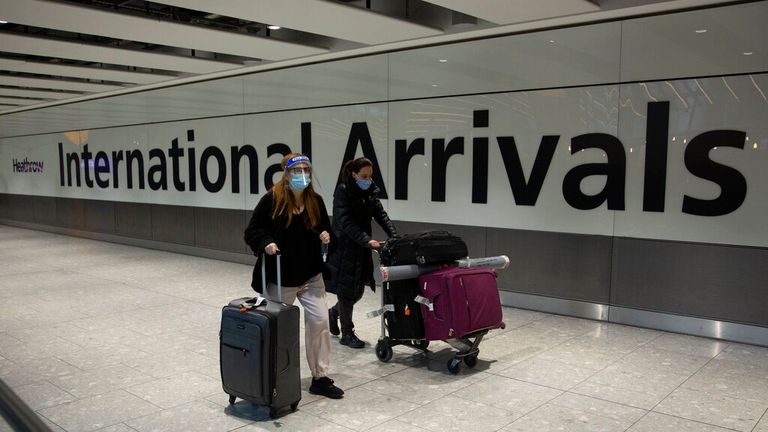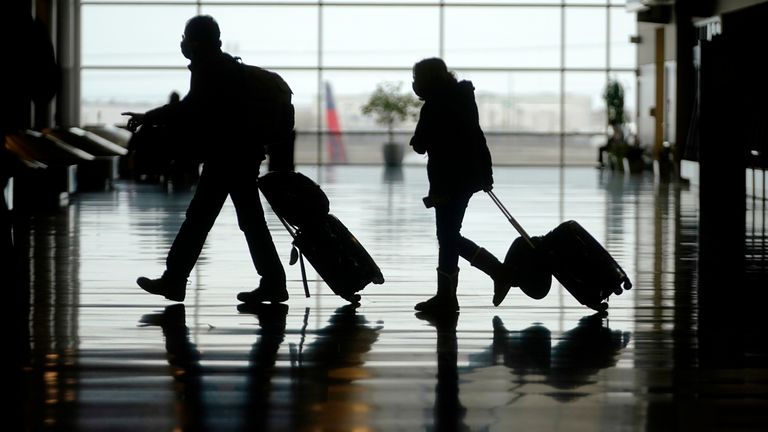A traffic light system that will categorise countries based on their COVID-19 risk levels is part of potential plans to safely restart foreign holidays.
This approach has been recommended by the government’s Global Travel Taskforce, which suggests international travel could resume from 17 May at the earliest in an “accessible and affordable way”.
It may be a few weeks before we know the exact date when trips abroad can take place, and which countries will be subject to the most relaxed measures.
Here is how the traffic light system will work:
Green countries
• People arriving in the UK from “green list” countries will need to take a pre-departure test in that country
• On or before the second day after arriving in the UK, they will need to take a PCR test
• They will not need to quarantine on their return unless they receive a positive test
• Test packages must be booked and paid for before travelling from a list of government-approved providers
Amber countries
• People arriving from “amber list” countries will have to quarantine for 10 days at home
• They will have to take a pre-departure test, then a PCR test on days two and eight
• There will be an option for “test to release” in which they can end self-isolation early if they test negative on day five by purchasing an extra PCR test
• Test packages must be booked and paid for before travelling from a list of government-approved providers
Red countries
• Arrivals from the “red list” will have to quarantine for 10 days in a specific quarantine hotel
• They will have to take a pre-departure test then PCR tests on day two and day eight
• Passengers must book and agree to pay for a quarantine package before departing for the UK
Green watchlist
• This will identify countries most at risk of moving from green to amber so travellers have some warning
• However, the government “will not hesitate to act immediately should the data show that countries risk ratings have changed”
How the list will be decided
• Countries in each category will be kept under review and the government will respond to data, focusing on variants of concern
• Vaccination rates, infection rates, the prevalence of variants, a country’s genomic sequencing capacity and access to reliable scientific will be taken into account
• The restrictions will be formally reviewed on 28 June to see whether the measures could be relaxed, followed by reviews “no later than 31 July and 1 October”
Passenger locator forms
• The form – where arrivals must fill in their travel details, UK address, passport details, COVID test booking reference numbers and quarantine hotel invoice (if needed) – will be digitised “by autumn 2021”
Stricter rules for airlines breaching consumer rights
• The Civil Aviation Authority will be given additional enforcement power to act on airlines that have breached consumer rights
• A COVID-19 charter will be introduced from 17 May, setting out what is required of passengers and what their rights are while the measures are in place
What the government is still looking into
• Ministers will work with the travel industry and private test providers to see how costs can be reduced “while ensuring travel is as safe as possible”
• This could include cheaper tests when returning home and they are looking into whether the government can provide pre-departure tests
• A digital travel certification system is still being looked at and the Department for Transport is considering how COVID passports could help outbound travel for countries that are using them
• “Work also continues to develop a system that could facilitate travel certification for inbound international travel,” the report added





